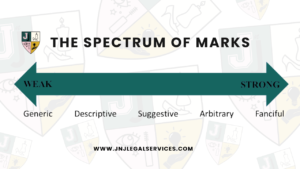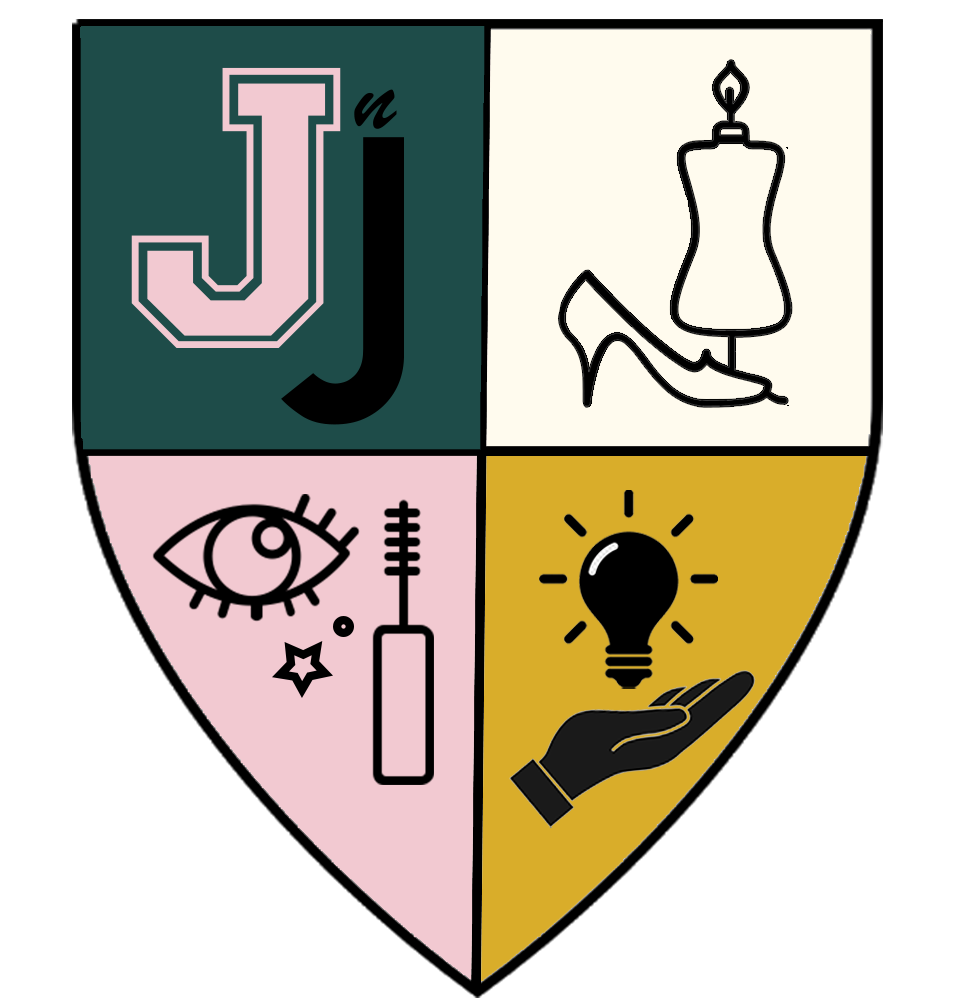Glossary
Find definitions and explanations to any legal terms and phrases mentioned on our blog and website.
This list is frequently updated to reflect new terms and phrases in alphabetical order.
Arbitrary Marks
Arbitrary marks refer to words with significance that are recognized in everyday language, but instead of signifying that particular thing, it signifies something entirely unrelated to the product or service to which the mark is attached.
Eg. Apple for computers and tech devices; Blackberry for mobile phones

"Circle C" ©
Copyrights that have been registered with the United States Copyright Office are entitled to use “Circle C”, ©.
"Circle R" ®
Trademarks that have been registered with the USPTO (United States Patent and Trademark Office) are entitled to use “Circle R”, ®.
Using the “Circle R” without an official trademark registration certificate is in fact illegal and a violation of federal law. It also serves as grounds for the USPTO to deny a pending trademark application.
Unregistered trademarks should use “Little/Superscript TM” ™ to indicate an intention to trademark or pending trademark application.
Common Law Trademark
A common law trademark refers to an unregistered mark that has been used in commerce, but has not been registered with the relevant trademark office.
💡 Common law/unregistered trademarks may use “Little/Superscript TM” (™) to indicate an intention to trademark or pending trademark application.
💡 A federal trademark refers to a mark that has been used in commerce and registered with the relevant trademark office. See “Trademark” and Federal Trademark” for more.
Copyright
Copyrights protect original pictorial, graphic, sculptural, musical, literary, and audio-visual works of art “fixed in a tangible medium of expression”.
“Original” here means that the work is “original” to you, i.e. created by you.
Expression = original idea + fixed medium; Copyrights protect expressions!
💡 Easy way to remember: Copyrights are for Content!
💡 Length of Duration: Copyrights last the length of an individual’s life + 70 years after death. And they last even longer if owned by a corporation.
💡 Copyrights that have been registered with the United States Copyright Office are entitled to use “Circle C”, ©.
Cybersquatting
Cybersquatting is the practice of registering, trafficking in, or using a domain name with the intent of profiting from the goodwill of someone else’s trademark. Cybersquatters register domain names that are identical or similar to well-known trademarks in order to divert internet traffic to their own website, potentially causing confusion among consumers and diluting the value of the trademark.
It is a federal crime that has been unfortunately popularized by social media coaches and entrepreneurs.
Descriptive Marks
Descriptive marks (also merely descriptive marks) refer to words that DIRECTLY DESCRIBE a characteristic, ingredient, quality, feature, or purpose of the goods or services.
Eg. American Airlines = airlines based in America

Design Patent
There are 3 types of patents – utility, design, and plant. In simplest terms, patents protect new and non-obvious inventions and grant owners “the right to exclude others from making, using, offering for sale, or selling” the invention in the United States or “importing” the invention into the United States.
Design patents protect new and nonobvious ornamental designs for non-functional features or aspects of manufactured products.
💡 Length of Duration: Design patents last 15 years from the date of issue.
Doctrine of Foreign Equivalents
The doctrine of foreign equivalents is a legal principle applied in U.S. trademark law which requires courts, the USPTO, and the TTAB to translate foreign words into English to determine whether they are registrable as trademarks, or confusingly similar to existing trademarks.
This doctrine is intended to protect consumers within the United States from confusion or deception caused by the use of same term in different languages. As a general principle, the doctrine is applied in situations in which an American consumer is likely to “stop and translate” foreign words into their English equivalent.
Most modern-day languages are subject to the doctrine of foreign equivalents.
Fanciful Marks
Fanciful marks are made-up words or symbols that have nothing to do with the products or services being offered.
Eg. Exxon, Polaroid, Rolex, Google, Reebok, Kodak, Xerox, and Dubsado

Generic Marks
Generic marks refer to words that are too closely related to the good or service such that it ACTUALLY NAMES the good or service. They are incapable of being trademarked on their own.
Eg: You can’t trademark “shoes” in clothing & footwear industry; can’t trademark “apple” in food industry

Genericide
Genericide refers to “the process by which a brand name loses its distinctive identity as a result of being used to refer to any product or service of its kind” (Google). It’s essentially the death of a trademark.
Patent
There are 3 types of patents – utility, design, and plant. In simplest terms, patents protect new and non-obvious inventions and grant owners “the right to exclude others from making, using, offering for sale, or selling” the invention in the United States or “importing” the invention into the United States.
Utility patents protect new, useful, and nonobvious processes, machines, manufacture or composition of matter, or any new and useful improvements.
Design patents protect new and nonobvious ornamental designs for non-functional features or aspects of manufactured products.
💡 Length of Duration:Utility patents last for 20 years from the date of filing. Design patents last 15 years from the date of issue.
Secondary Meaning
*Required with descriptive marks!
Marks that lack distinctiveness require secondary meaning in order to become a registered trademark. A company must show that they have reached a level of fame and notoriety that a mark that would be considered non-distinct has become recognizable as a brand for particular services/goods from only one source.

Spectrum of Marks
All trademarks exist on a spectrum called Spectrum of Marks. Sort of like having a strong password vs a weak password, the spectrum of marks categorizes all marks into varying strengths of “trademarkability”.

Suggestive Marks
Suggestive marks refer to words that SUGGESTS a feature or characteristic of the goods or services, but requires a bit of thought and imagination to determine what the goods or services are.
Eg.Microsoft: micro –> microchips and soft –> software
Greyhound: greyhounds –> fast animals —> fast transportation

"Little/Superscript TM" ™
Unregistered trademarks may use ™ to indicate an intention to trademark or pending trademark application.
Once registered with the USPTO (United States Patent and Trademark Office), an owner should use “Circle R” ® to indicate federal trademark registration.
Trademark
A trademark, or mark, refers to words, phrases, symbols, etc. by a manufacturer/merchant that identifies its goods and distinguishes those goods from those made or sold by another; a trademark is a source identifier.
Trademark = mark + industry
💡 A common law trademark refers to an unregistered mark that has been used in commerce, but has not been registered with the relevant trademark office.
💡 A federal trademark refers to a mark that has been used in commerce and registered with the relevant trademark office. See “Federal Trademark” for more.
💡 Length of Duration: Trademarks last INDEFINITELY as long as you continue to use the mark in your business. A trademark is the only form of IP that lasts forever! Another reason why it’s every business’ most valuable asset.
💡 Unregistered trademarks may use “Little/Superscript TM” (™) to indicate an intention to trademark or pending trademark application.
💡 Trademarksthat have been registered with the USPTO (United States Patent and Trademark Office), i.e. Federal Trademarks, are entitled to use “Circle R” (®).
Federal Trademark
A federal trademark is a word, phrase, symbol, and/or design (i.e, a “mark”) that identifies and distinguishes the source of goods of one party from those of others on a national level through the United States Patent and Trademark Office (USPTO).
Examples of possible marks include:
- Brand names, logos, monograms, slogans, tag lines, domain names
- Shapes, colors, stripes, sounds, smells
- Product packaging and payment methods
- Store’s decor, menus, and interior-exterior layout
- And so much more…
Trademark Dilution
Trademark dilution “refers to the use of a trademark or trade name in commerce that is sufficiently similar to a famous mark that by association it confuses or diminishes the public’s perception of the famous mark” (Google).
Trademark Infringement
Trademark infringement is the “unauthorized use of a trademark on or in connection with goods and/or services in a way that is likely to cause confusion, deception, or mistake about the source of the goods and/or services” (USPTO).
Trademark Registration Process
The trademark registration process is a federal legal proceeding that grants a person or company exclusive, national use of a particular mark (brand name, logo, slogan, etc.) within their specified industry(ies).
Trademark Search Report
A trademark search report is a comprehensive search conducted to determine whether a proposed trademark is available for use and registration. It is conducted to identify any existing trademarks or competitors that may conflict with the proposed trademark.
The report includes a search of both registered and unregistered trademarks in the relevant jurisdiction(s) and can provide information on similar or identical marks, pending applications, and expired trademarks. It may also include information on common law trademarks, which are unregistered marks that have been used in commerce, but have not been registered with the relevant trademark office.
The trademark search report is an important step in the trademark registration process as it helps to ensure that the proposed trademark is distinctive and unique enough to be registered, and that it does not infringe on any existing trademarks. It can also help to prevent legal issues down the line by identifying potential conflicts or infringements with existing trademarks.
Trademark Trial and Appeal Board (TTAB)
The Trademark Trial and Appeal Board (TTAB) is a panel of administrative judges who handle appeals involving applications to register marks, appeals from expungement or reexamination proceedings involving registrations, and trial cases of various types involving applications or registrations.
Trade Name
A trade name is the name your business is commonly known as or the name you use when advertising or doing business (DBA – doing business as).
Your trade name can be your LLC name, DBA name, and it may even be the same as your trademark if you choose to register your brand name.
United States Patent and Trademark Office (USPTO)
United States Patent and Trademark Office (USPTO) is the federal agency in the U.S. Department of Commerce that serves as the national patent office and trademark registration authority for the United States.
United States Copyright Office
United States Copyright Office is the federal agency in the U.S. Department of Commerce that serves as the national copyright registration authority for the United States.
Utility Patent
There are 3 types of patents – utility, design, and plant. In simplest terms, patents protect new and non-obvious inventions and grant owners “the right to exclude others from making, using, offering for sale, or selling” the invention in the United States or “importing” the invention into the United States.
Utility patents protect new, useful, and nonobvious processes, machines, manufacture or composition of matter, or any new and useful improvements.
💡 Length of Duration:Utility patents last for 20 years from the date of filing.
